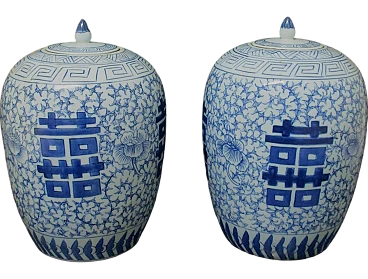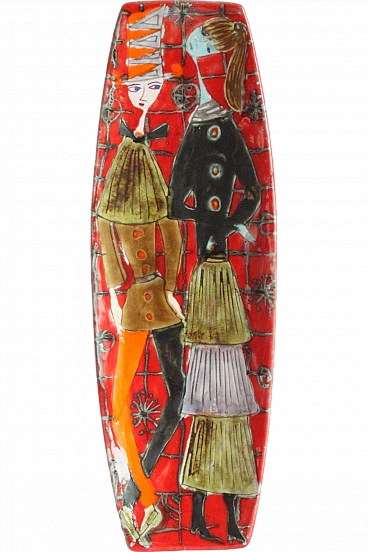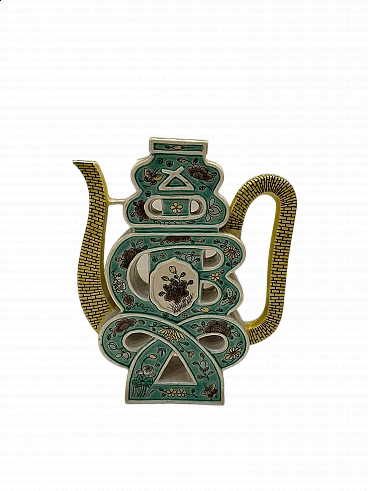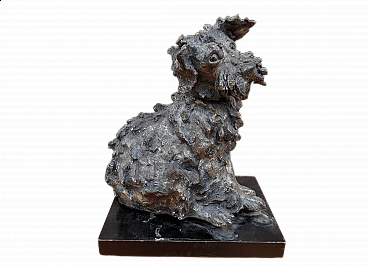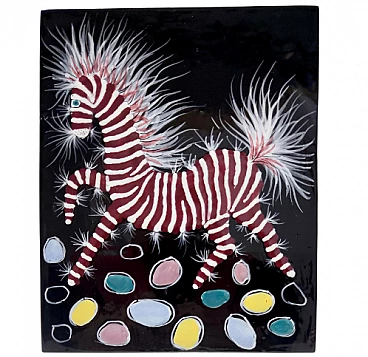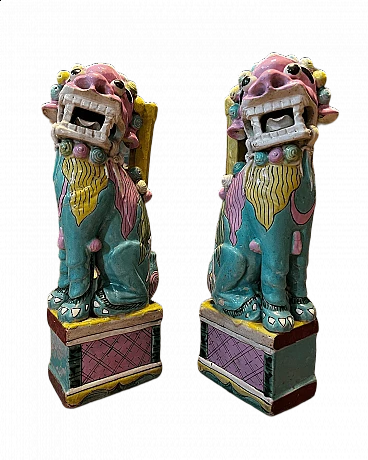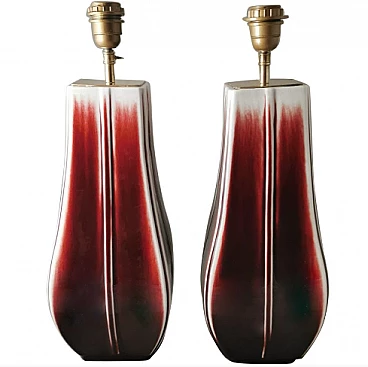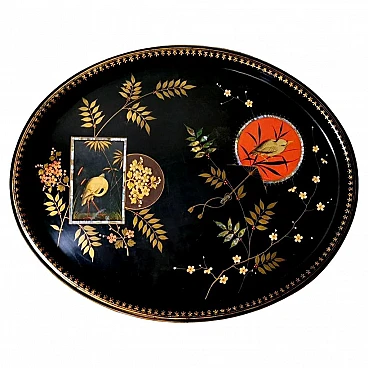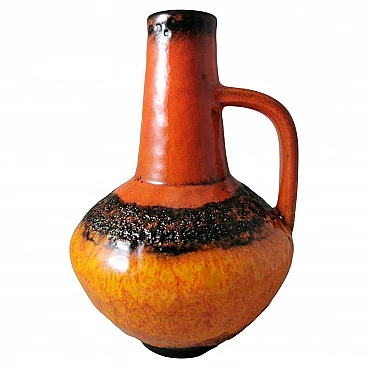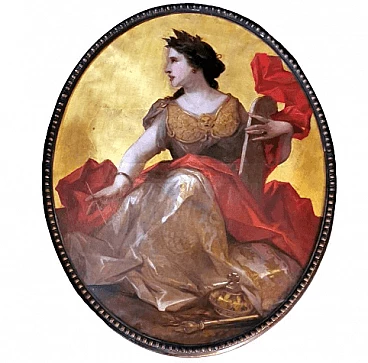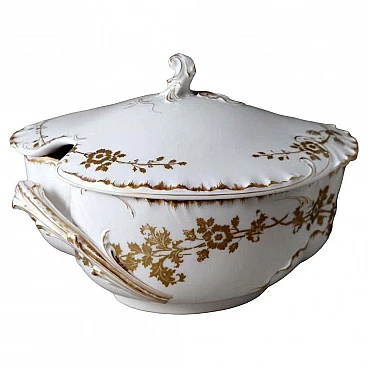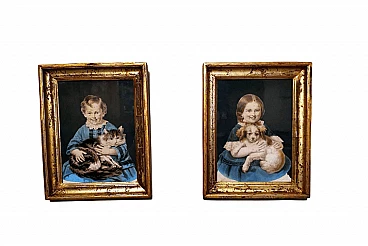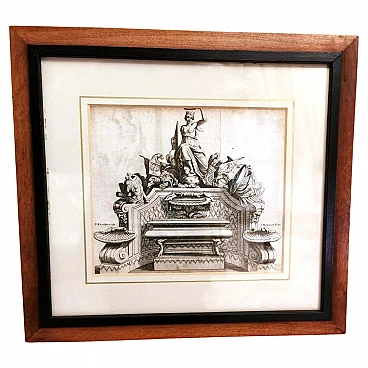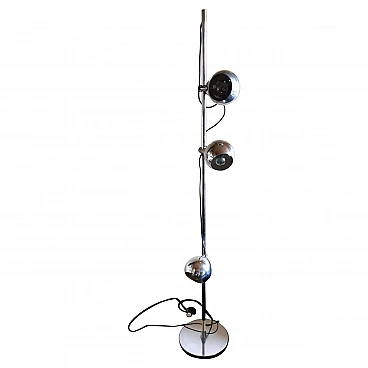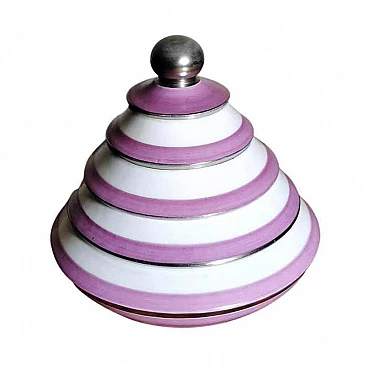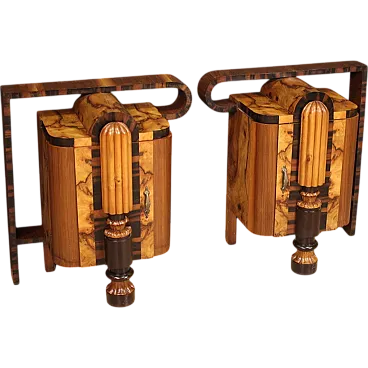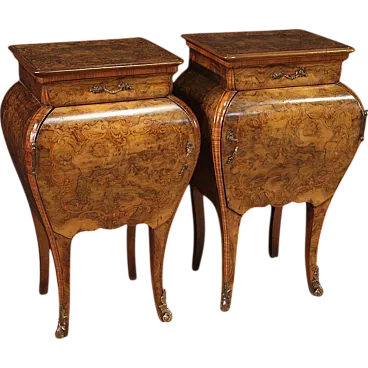This exceptional and unique chalice features a red Murano glass bowl and a silver stem crafted using the microfusion technique in the Art Nouveau style. The object as a whole exemplifies rare and extraordinary craftsmanship. The shape of the goblet evokes the typical Venetian "Tipetto" glass. It combines two distinct artisanal techniques and was made in the 1930s in a small silver workshop in Venice. Here, the artisan fashioned the chalice’s silver stem using the micro fusion technique, with chiseled details, depicting a calla lily resting on the round base, with its leaves gracefully winding along the stem. A small work of art in the Art Nouveau style! Due to his small-scale production, the artisan could not obtain the official silver hallmark. However, given the uniqueness of the piece, this detail becomes secondary in importance. The artisan did not stop at this stunning creation—he was further amazed by adding an equally rare Murano glass bowl to the top of the stem. This bowl was crafted using a rare technique known as Pulegoso glass. Thus, our chalice was born: a truly unique, unusual, and captivating piece. Pulegoso glass is one of the most distinctive creations in Murano's glassmaking tradition, renowned for its opaque, spongy appearance, characterized by numerous air bubbles (puleghe) trapped within the glass mass. This distinct feature results from a specialized process that makes the glass both visually and texturally unique. The artisan who crafted this bowl pushed the technique to its limits, creating unusually large bubbles—an extremely difficult task, as these bubbles tend to escape the glass, and some even burst on the surface, further highlighting the goblet's uniqueness. One of the most captivating features of Pulegoso glass is its interaction with light. The internal air bubbles, varying in size, create a diffusion of light that reduces transparency, giving the object a soft, luminous effect. Unlike more polished and transparent glass, Pulegoso glass absorbs and diffuses light gently, imparting a warm and soft aura to the piece. As shown in the photos, the glass's appearance changes depending on how the light strikes it. Pulegoso glass was invented in the early 20th century, around 1928, by Napoleone Martinuzzi, a leading Murano glassmaker and the artistic director of Venini & C. Martinuzzi aimed to create glass with a more solid and textured look compared to the transparency of traditional Murano glass. His quest for new textures and tactile sensations led him to experiment with air bubbles, thus creating the signature effect of Pulegoso glass. To produce these bubbles, glassmakers add baking soda or oil to the molten glass, which releases carbon dioxide. This process is extremely challenging to control and can be dangerous due to the rapid release of gas. Only the exceptional skill and experience of Master Glassmakers make it possible to craft Pulegoso objects. Between the 19th and 20th centuries, several workshops began experimenting with combining precious materials and Murano glass, resulting in unique pieces like the "Tipetto" glasses, often featuring silver stems. These workshops likely collaborated with Murano glass masters to add precious details to their creations. The chalice is in excellent condition. Measurements: diameter 8 cm, height 24 cm.
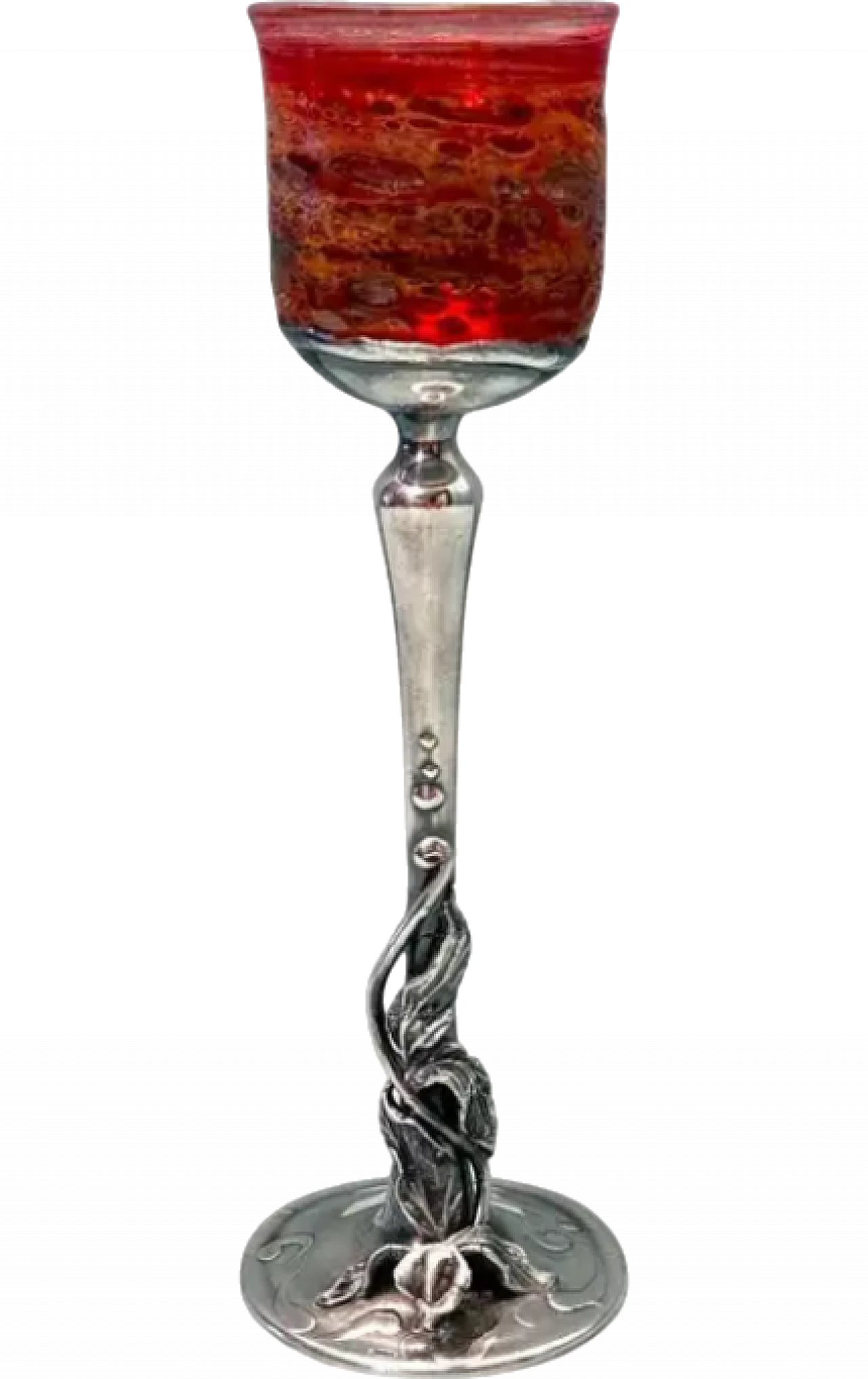
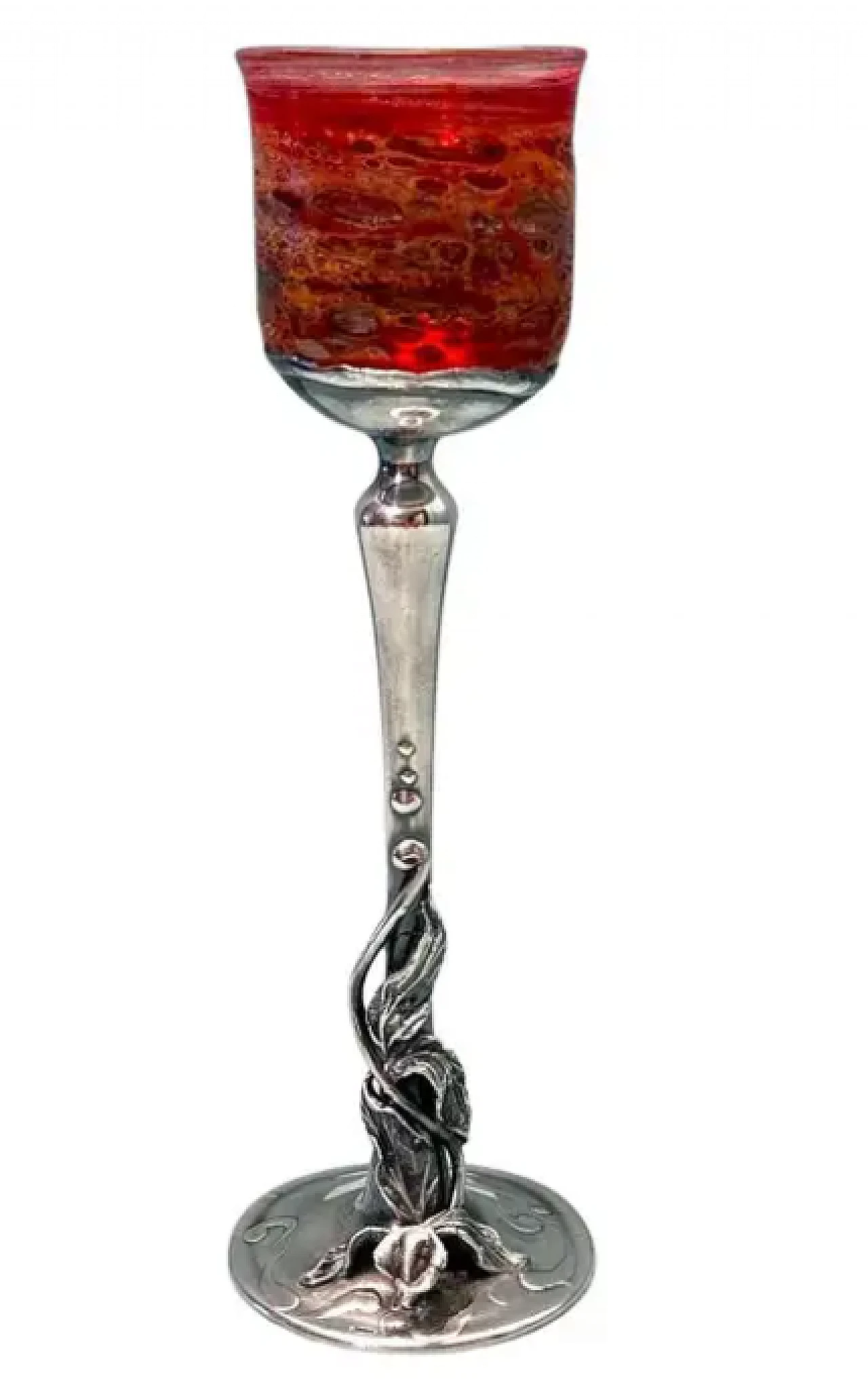
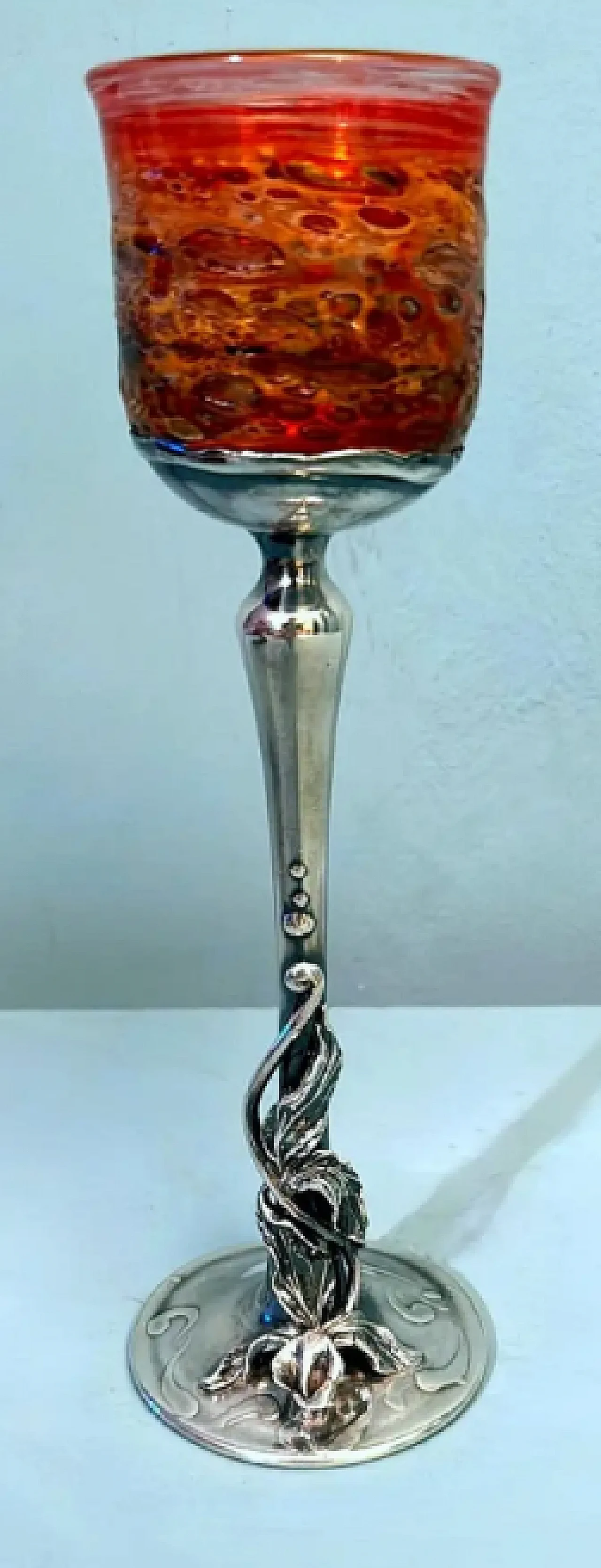

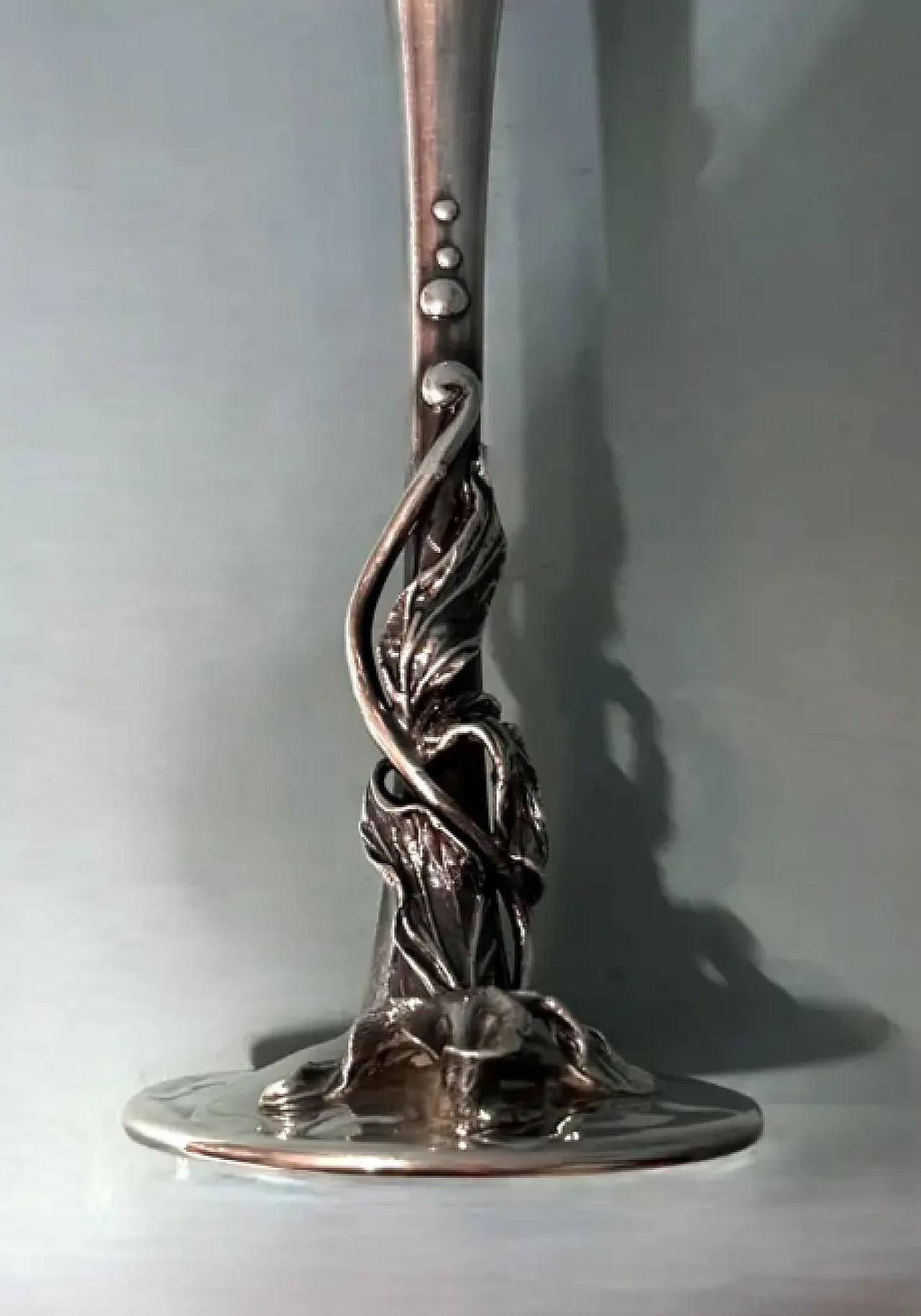
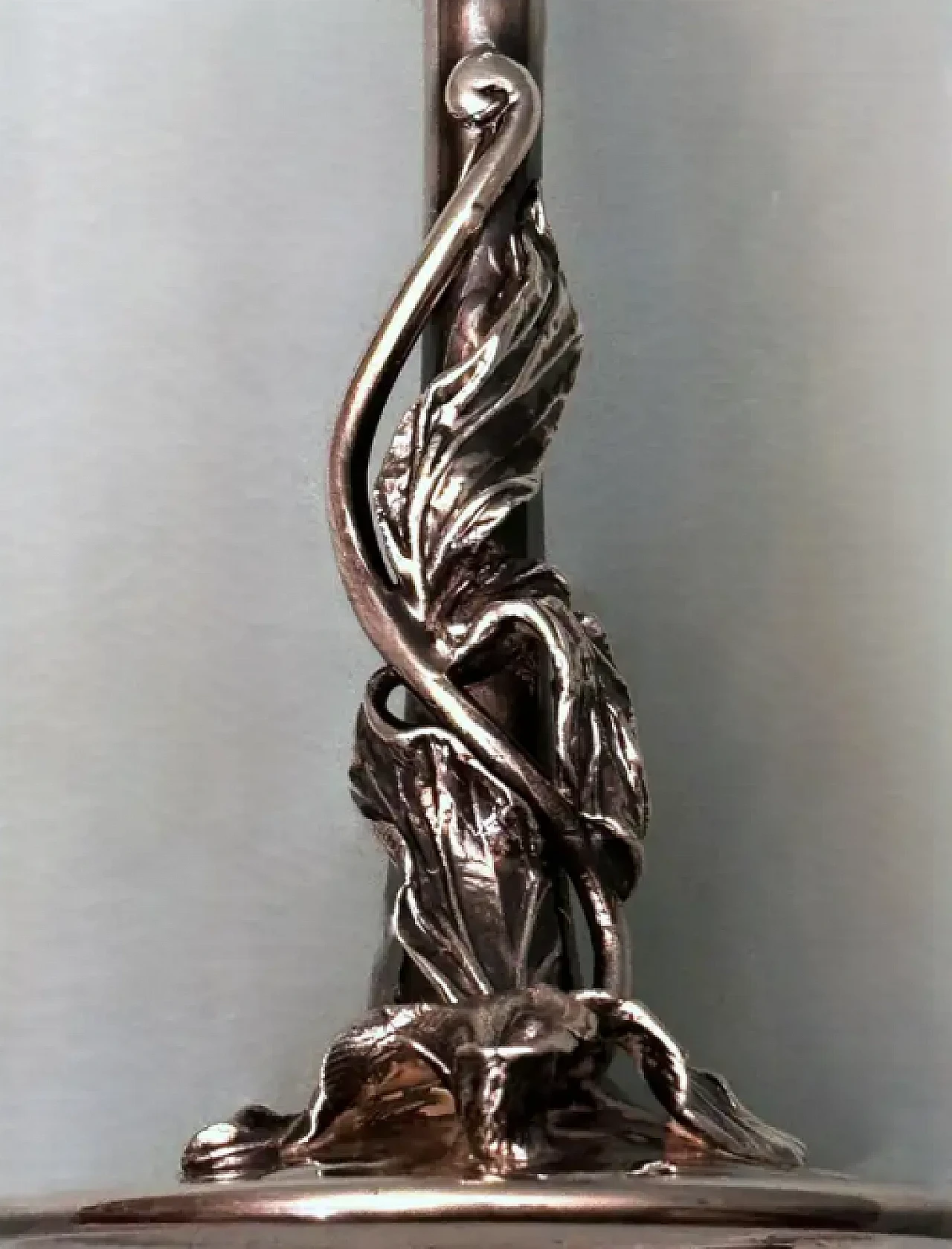
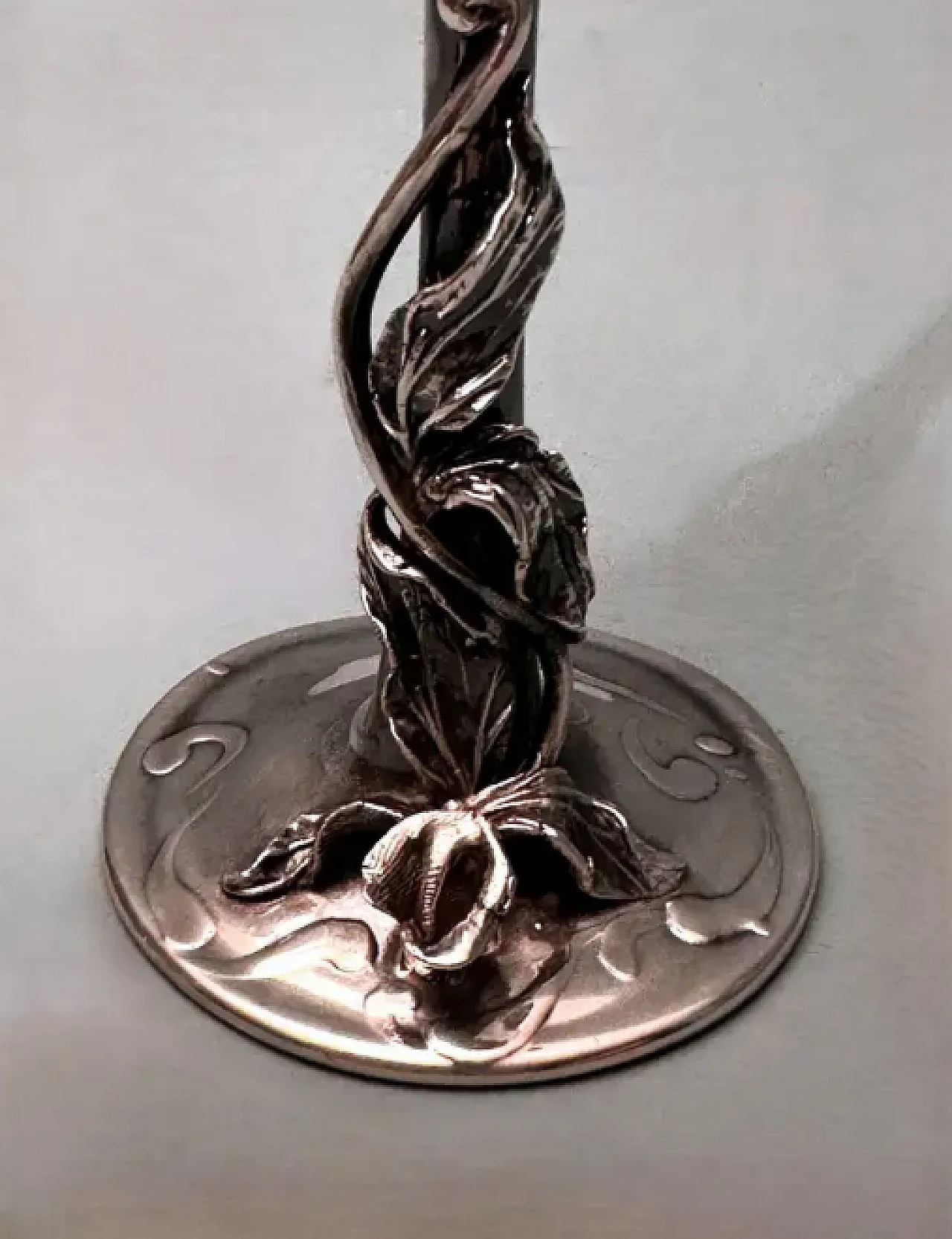
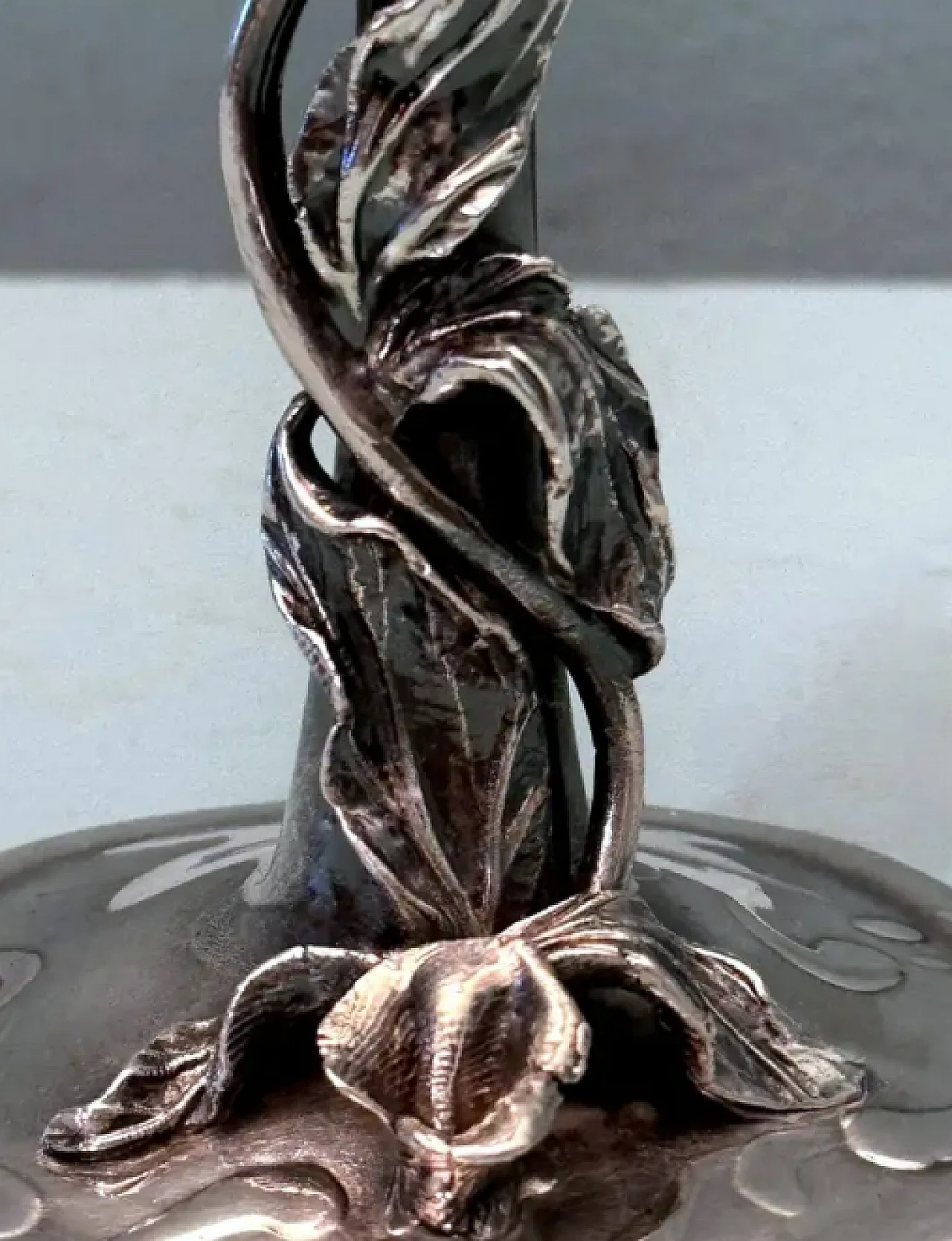
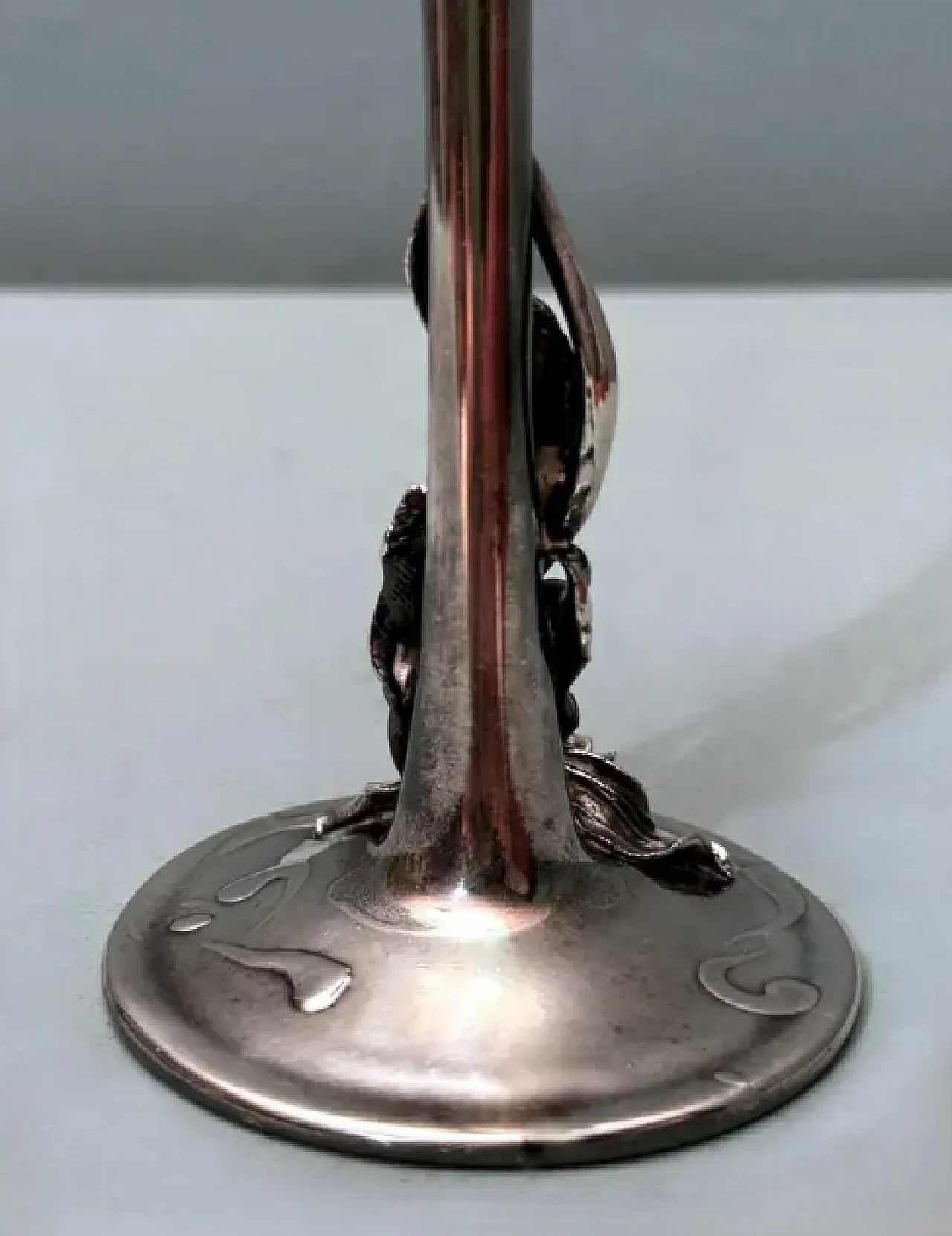
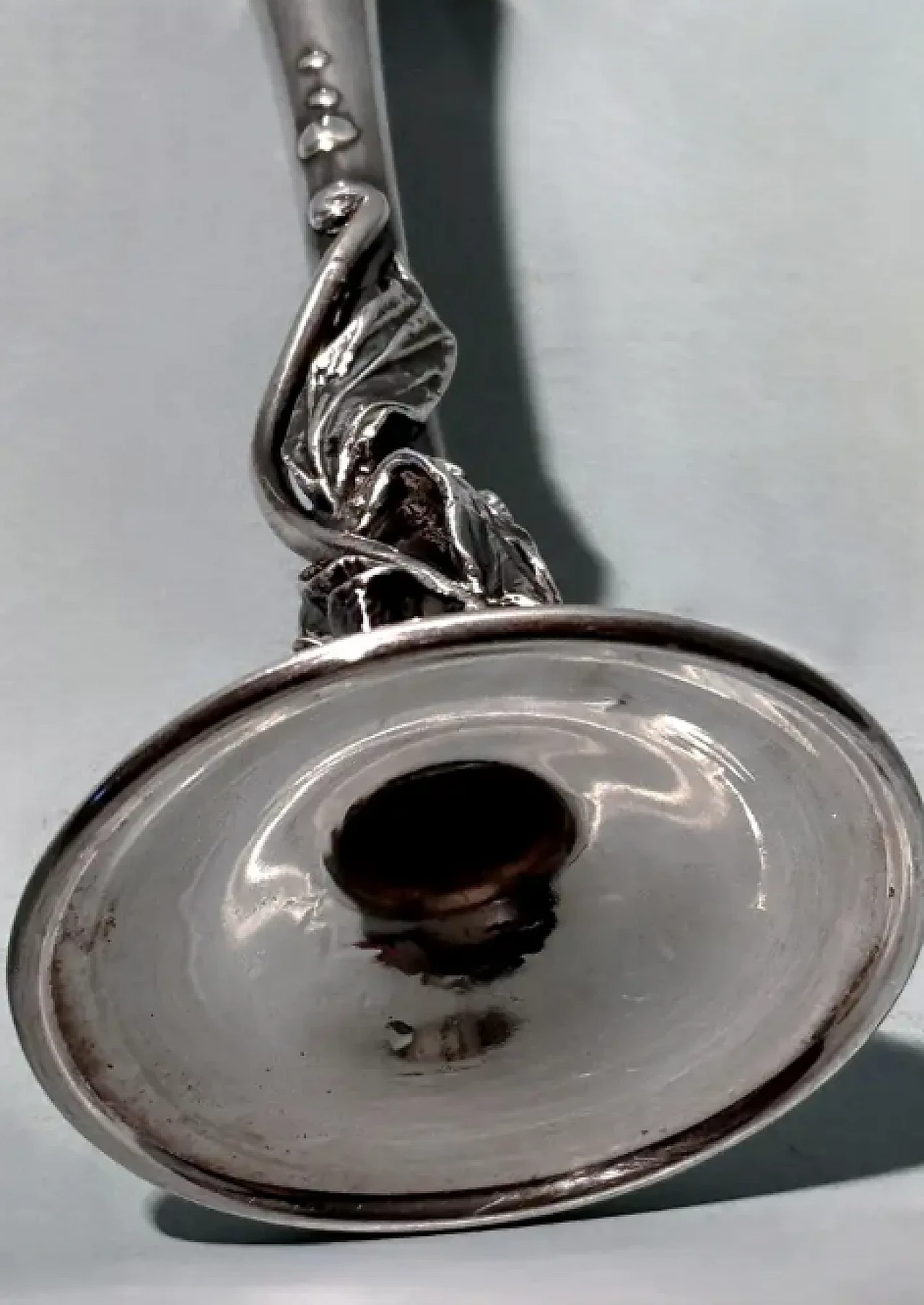
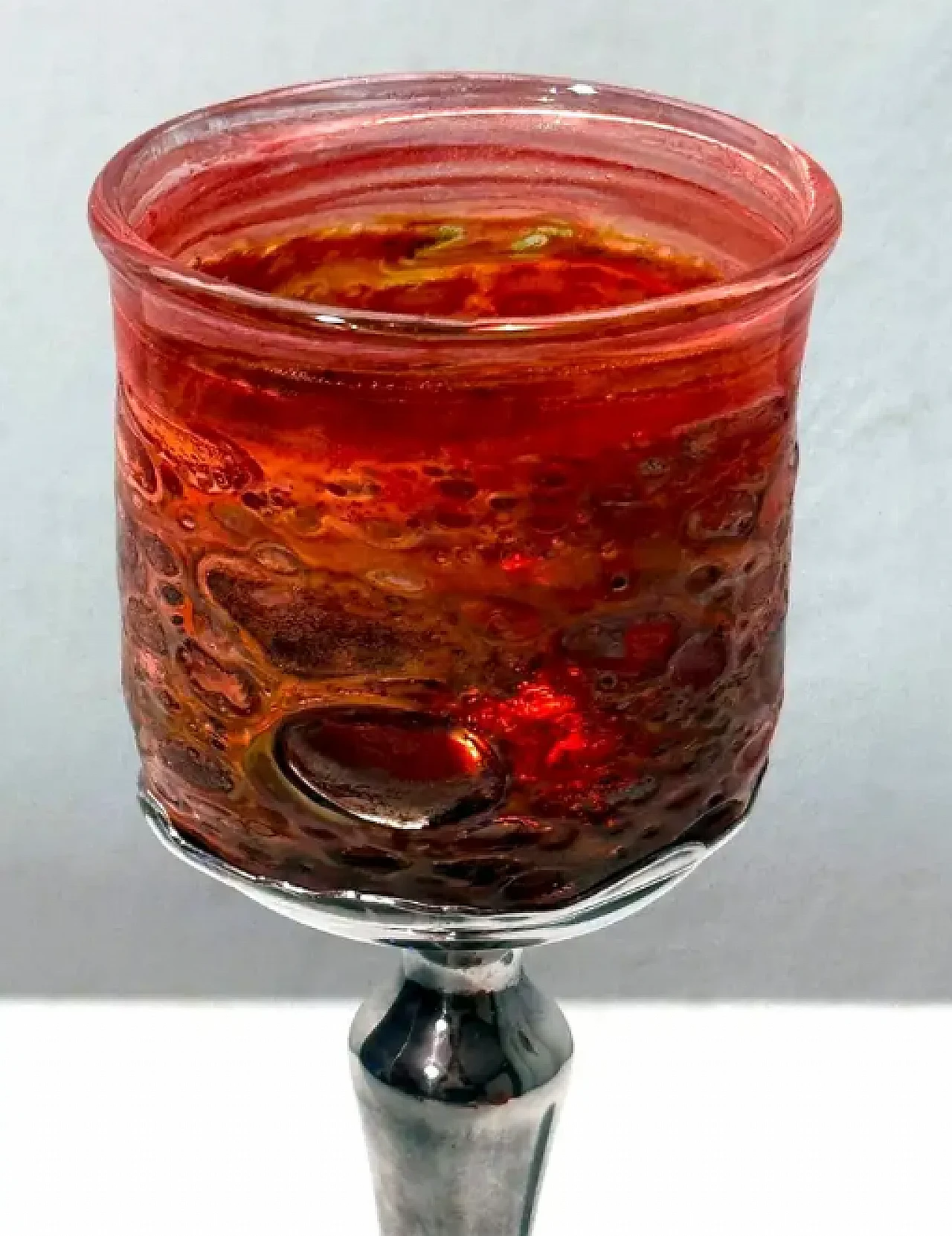
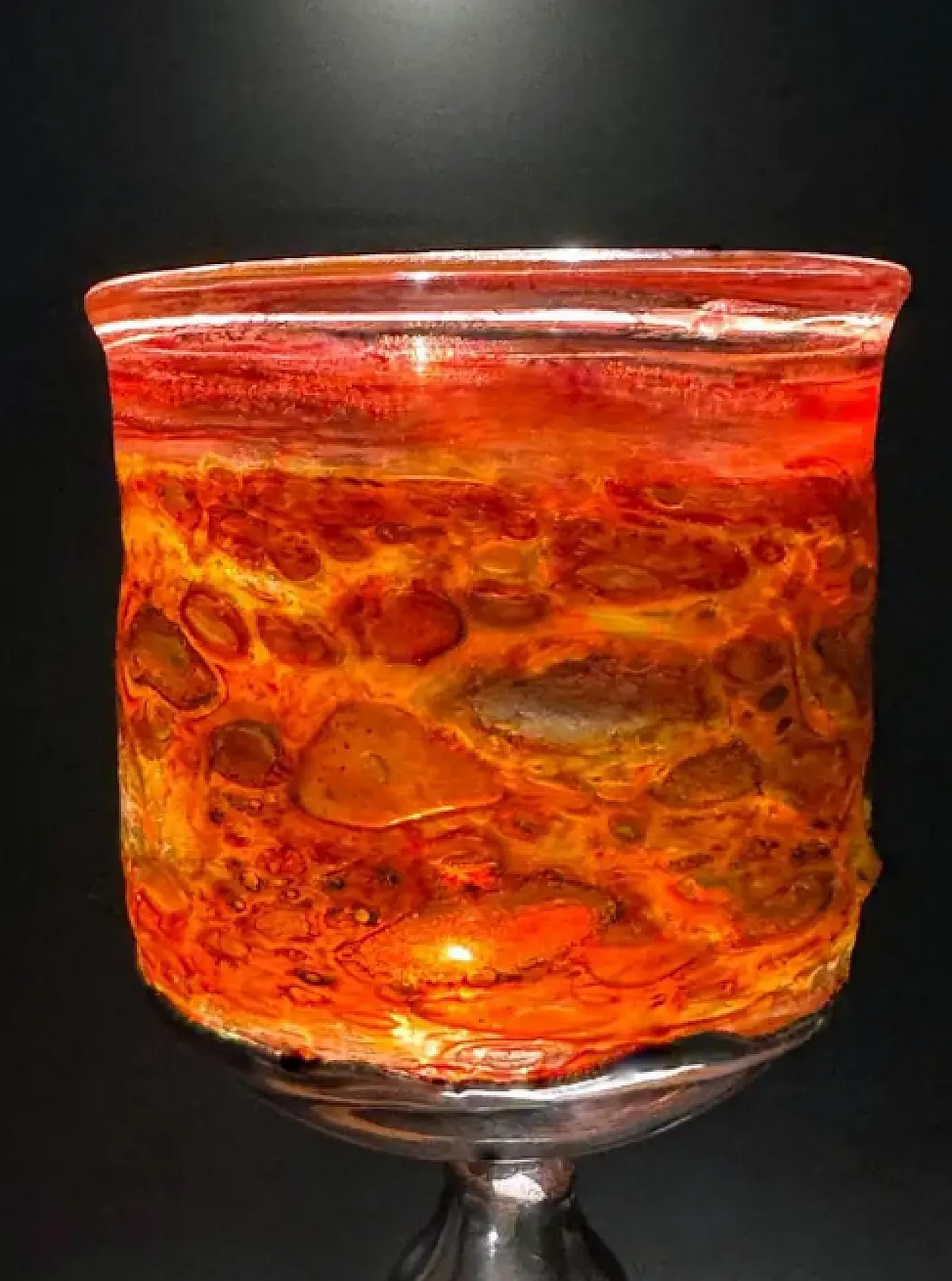
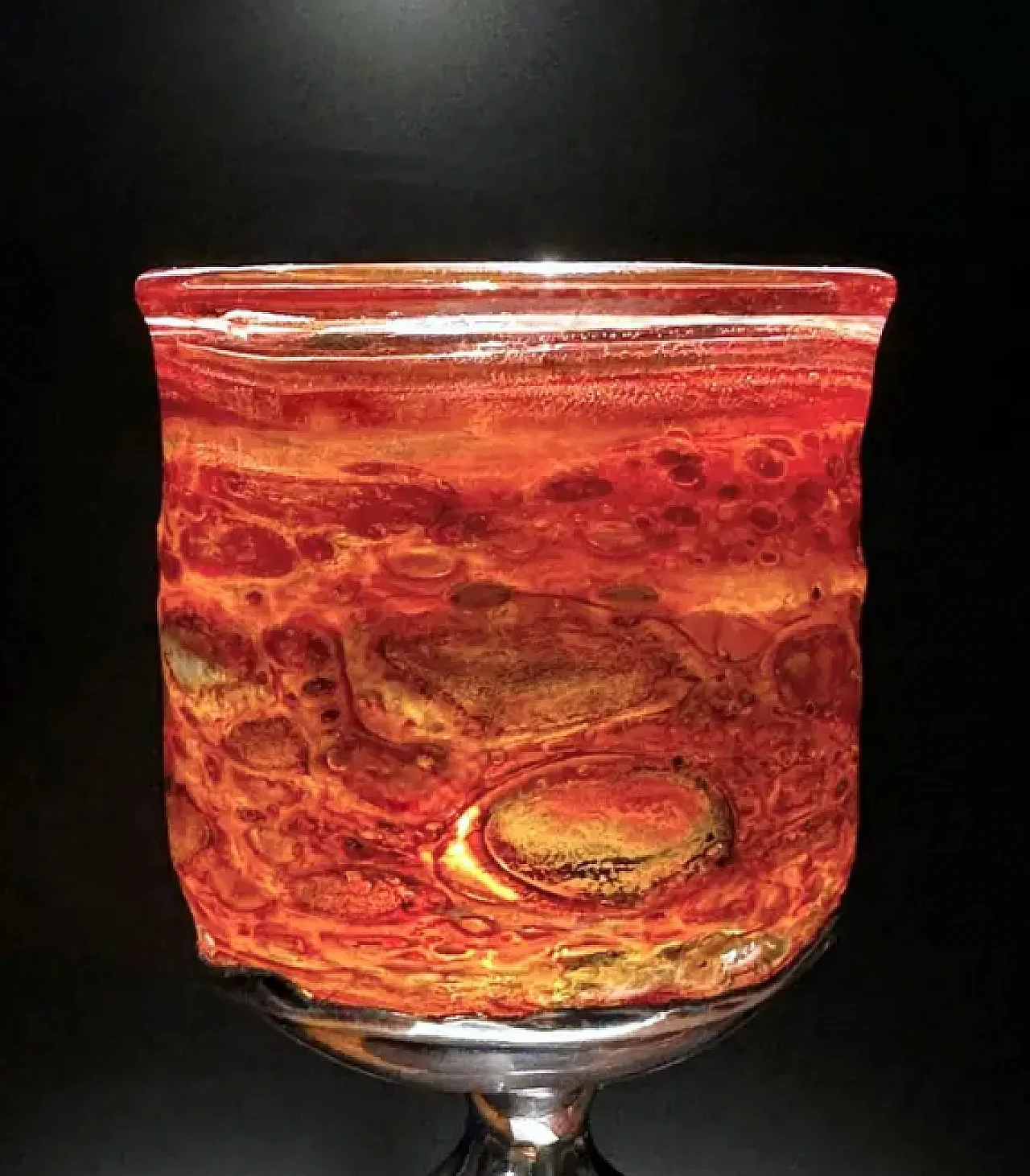
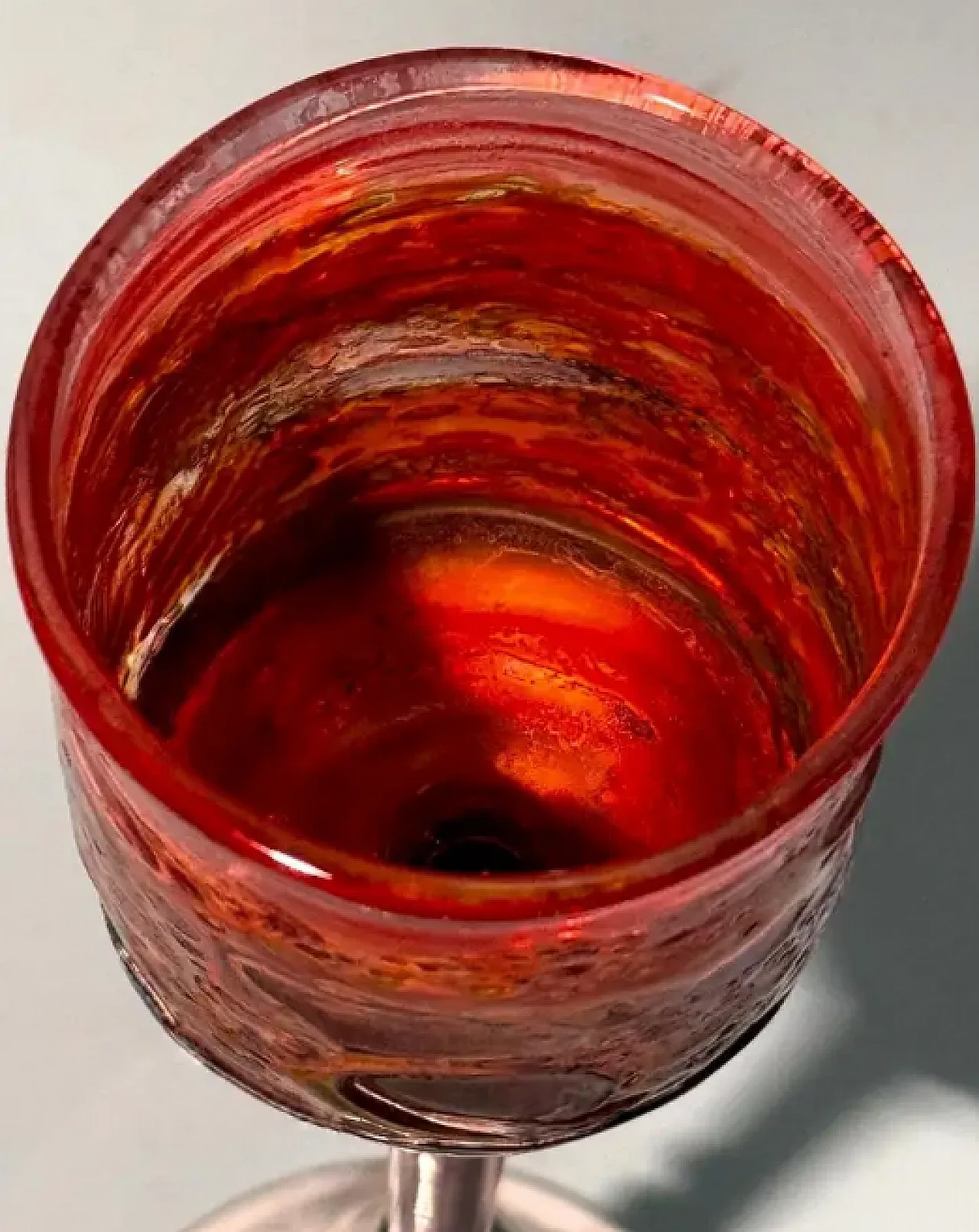
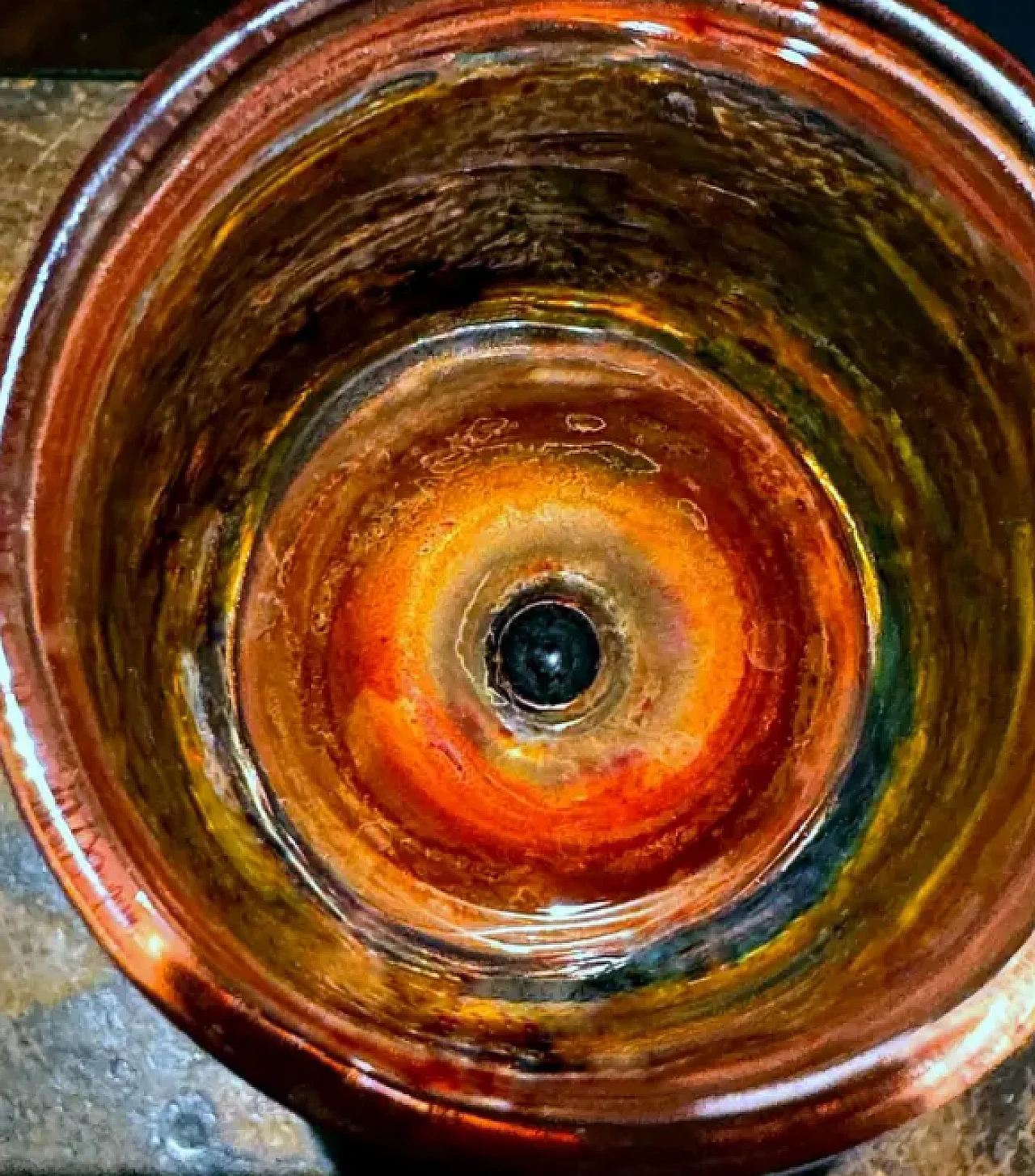
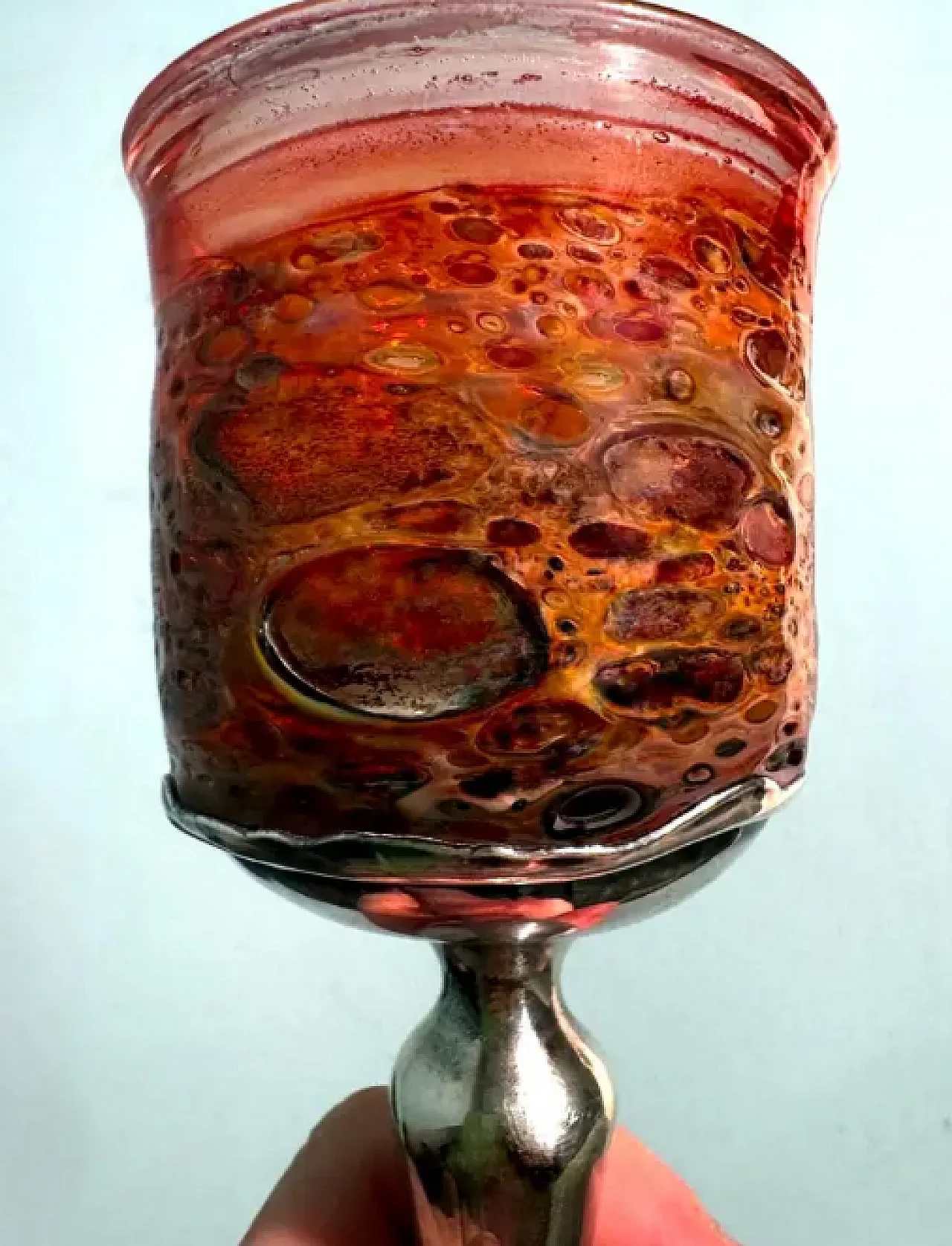
 SILVER Seller in Prato, Italy
SILVER Seller in Prato, Italy






.png)





